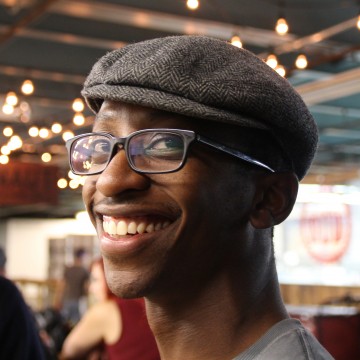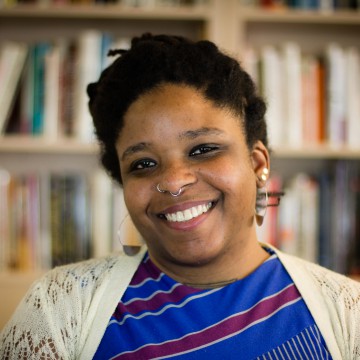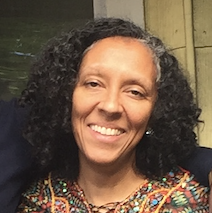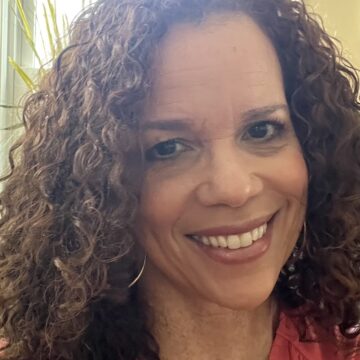Posted in Liberation
March 22, 2018
This post was originally published on this date in 2016 and we find it enduringly relevant today. It contains a true story and a Facilitator’s Guide for handling situations like this.
A True Story
At a recent training I was leading for an all queer and multiracial group, an older white man “John” took offense to my use of the word queer. As an icebreaker, I had asked the group to share in a pair, when did you first know you were queer? During the debrief, John took time to explain how the Q-word brought back painful memories of the many ways he was shamed growing up. As he explained, he got emotional and then said “using the Q-word is like using the N-word for me.” And he actually said the N-word.
The air in the room suddenly got heavy and many people shifted uncomfortably in their seats. The three black men in the group looked stunned, and the rest of the people of color in the circle turned to me to do something. The white man kept talking, completely unaware of that this micro-aggression had caused a change in the room. I waited for a white person to address what happened. But folks remained silent, so just as the next person began sharing, I stopped the process.
“I want to stop and check something out with you and the group. Is it ok if I do that?” I asked John and turned to the group to seek their approval. “John, thank you for sharing the impact that I had on you when I used the Q-word in this circle. I want to account to you for that. I also heard you use the N-word and I am wondering if you would be open to hearing the impact that that word could have had in the space?”
Read More
February 2, 2018
February 5, we launch a connection/productivity experiment called Rays. It derives from a critical piece of team infrastructure we invented while working at IISC, the secret ingredient to our team’s performance. Without it, we noticed a gap and with it, the work (and our team) flowed more smoothly. That makes us think our little practice could benefit others. So we’ve decided to do an open call for participants.
The practice is a short, daily meeting: Rays. For less than 30 minutes, you will join an online call and share three things:
- RAY: something you are grateful for
- TASK: something you are doing that day
- BLOCK: something literal or existential in the way
There is no solving. It’s just reporting and listening.
We are inviting people to join us in February (starting as early as the 5th!). You commit to showing up to an online call for 5-days, up to 30 minutes, and sharing.
Read More
January 31, 2018

Power. Networks. Love. These three aspects of the IISC’s Collaborative Change Lens were not the official theme of the Victory Institute’s 2017 International Lesbian, Gay, Bisexual, Transgender, and Queer (LGBTQ) Leaders Conference, but they were woven throughout everything that happened there.
The Victory Institute works to get LGBTQ people into elected and appointed office. Their annual conference brings together elected officials, leaders, and advocates for three-days. The content of the conference focuses on skill-building, information sharing, and formal and informal networking.
The first gathering of this group took place in 1984 with about a dozen people. Attendee John Heilman, city council member of West Hollywood, described the gathering as “more like a support group” than a conference. It has now grown to a convergence of over 500 attendees from all over the world.
Power
The reclaiming of power is central to the mission of the Victory Institute: “LGBTQ Victory Institute works to increase the number of LGBTQ people in public office and to provide programming, service and other support to help ensure their success.”
Why do we need more LGBTQ people in public office? With characteristic wit and bluntness, former U.S. Representative Barney Frank, the first person in Congress to come out voluntarily, said, “If you are not at the table, you are likely on the menu.”
The data tells the story this way: there is a direct correlation between the number of LGBTQs in elected office and the inclusion and equality of a jurisdiction’s policies.
Networks
In traditional ways, conferences tend to have a strengthening effect on networks. At plenaries and breakouts, attendees of the Victory conference had opportunities to connect around shared interests and maybe even to flirt a little. But the conference used the opportunity of the traditional schmoozing times to amplify traditionally marginalized voices. There was a “Leading in Color” reception which lifted up people of color, an International reception, and a Women Out to Win reception. The Institute also strengthened their pipeline for young leaders with the Victory Congressional Internship Meet & Greet.
Love
The feeling of love was palpable throughout the conference. Because of the bullying and harassment we’ve experienced, no one knows better than the LGBTQ community how much humans need to be celebrated and cheered. Whenever someone announced they were running for elected office, the audience burst into applause.
The spirit of love and humility was also present in a frequently repeated quote from Danika Roehm, the transgender metalhead stepmom, elected as the first openly transgender person to the Virginia Assembly – the first to serve in any state legislature actually. Roem won against Robert Marshall, the sponsor of a bill to restrict public bathroom use by transgender people, who referred to himself as Virginia’s “chief homophobe.” After the election, when asked if she had anything to say about Marshall, Roem said, “I don’t attack my constituents. Delegate Marshall is my constituent now.”
Pretty lucky constituent.
January 29, 2018
I migrated to the United States in 1998 via the F1 visa application process. This process allows a family member who is a citizen to apply for immediate relatives to become permanent residents. The premise of this process is one of family reunification and the applicant (citizen) must be a resident in the United States during the greater part of the application period. In my case, my mother was the applicant so this meant that during the better part of two years while I was in high school my mother had to live in the United States while my brother and I lived in Trinidad. Being separated wasn’t the only thing we all/each sacrificed; there are several ramifications of this process that go along with the privileges of becoming a US citizen. And, I don’t make light of those privileges, especially as my particular immigration story is indeed one of great privilege relative to the experiences of those who are currently under direct attack by the federal government and by the right wing media. (I say “currently” not to say that undocumented immigrants were not under attack by previous administrations, but to say that I do not know when naturalized citizens and permanent residents will be under direct attack, as well. We’ve already seen it begin with the “Muslim Ban.”) But this reflection isn’t about the politics of migration, although we would do well to continue to reflect deeply on that. Rather, I am contemplating the state of my heart as an immigrant.
One thing I have noticed over the time that I have been in the US is that my heart is always torn in two. As someone who straddles two different ways of being, two different nationalities, two different ways of looking at the world, it has been a doozy for reconciling identity. On the one hand, this is stressful, but on the other, like so many other third culture people I know, it is actually a great super power. I can see the world from different perspectives and can necessarily integrate them in a way that produces something better than the sum of the parts. Immigrants have super powers, y’all. We can take the best of many different worlds and create beautiful, delicious, vibrant expressions of what liberatory futures look like.
Today, one of the experiences that I’m yearning for that comes from my culture is the annual ritual of liberation we call Jouvay or J’ouvert. I won’t go into all the history of colonialism and slavery that gave rise to this tradition, but I will say that in the modern era it is a great spiritual cleansing and a public ritual of liberation that takes over the streets of Port of Spain during the climactic second-to-last morning of the Carnival season. (This year it will take place in mid-February.) Carnival itself is a letting go, a festival of liberation based on the pre-Lenten Catholic festivals of the French and Spanish when they gave one last hurrah to the vices and proclivities of the flesh before engaging in the 40-day long period of fasting beginning on Ash Wednesday. During our Jouvay, participants adorn themselves in handmade costumes, and in mud, oil, paint, and cocoa or baby powder, and they chip through the streets in great abandon under cover of darkness in the early hours of the morning until just after sunrise. Jouvay begins at 2:00 a.m. and ends around 7:00 a.m.! I am watching friends in Trinidad prepare for this day by gathering mud, by gathering the friends they want to be with on the road, and by beating the drum of anticipation for the ritual that allows for release and rebirth.
I crave this ritual or any other ritual of liberation that allows us to let go, to be free, without trappings and accoutrement, without fear. To experience what it is like to just have love, and music, and dance, and laughter, and spirit…and rum. I am craving stories of the feeling of liberation here in the US. I am craving a liberation praxis. So often when we are asked about liberation as activists, we describe the struggle, the fight, the organizing, the process towards liberation. But I want to know…what elements of liberation are people experiencing right now even in the midst of the struggle? Even if it is for just a moment or an hour, when do you feel free? What are the experiences we want to expand in our liberatory future because they make us feel a little bit free now?
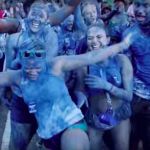
December 20, 2017
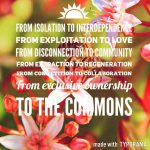
I’ve been observing the role of Mercury’s retrograde on my systems. Paying attention to my thoughts and feelings, the shifts and entrenchments. Lately I’ve been feeling a bit stuck. Or to use another metaphor, a bit ungrounded. It’s easy given the flow of information, the speed of communication, and the function of social media to feel pulled in many different directions. In addition, as a consultant, balancing the priorities of several clients at a time can often make it difficult to focus. When this happens I try to strengthen the consistency of my meditation practice and focus on my personal and professional goals to provide a guidepost for my actions.
I realized as I sat in meditation the past few mornings that my sense of purpose had been unattended to for a while. No wonder I felt scattered or ungrounded. Having a clear sense of purpose, an understanding of what I feel committed to and associated goals provides an important filter or straight line through all of the choices I face daily and helps to ground and retain focus. So I’ve been reflecting on purpose, leaning in to what is resonating for me in my conversations with colleagues and what is I am feeling called to in the movement. I’ve also been thinking about what threads together the work I am doing at IISC and my cultural work with Intelligent Mischief.
My commitment, or purpose, is to engage in transformation of myself and others towards liberation. This work aligns with what I do at IISC by supporting the self-empowerment of transformational leaders and by creating possibility for liberatory organizations that can really bring about the social transformation…that world, that speaks of, that “on a quiet day we can hear her breathing.” It also aligns with my work at Intelligent Mischief by cultivating a cultural shift that makes this transformation irresistible through the use of popular culture.
I reflected on what principles underscore this transformation for me…principles we can embody now at all levels to move us in the direction of liberation.
I see this transformation being underscored by a shift from isolation to interdependence, from exploitation to love, from extraction to regeneration & healing, from disconnection to community, from competition to collaboration, from exclusive ownership to the commons, from othering to belonging…and there are certainly many more.
These principles exist currently in practice but are overshadowed by the dominant culture especially at macro levels of society. Capitalism, our current dominant economic system, has been built on the principles that we are transitioning away from. The transformation of this system thus requires creating new systems based on the principles that we are transitioning towards. The question is, how do we expand these principles?
What can be our role at IISC in supporting leaders to develop practices that embody this transformation? In building structures that prefigure this transformation? And what is the transition in alignment with those principles that we ourselves must make as an organization?
November 20, 2017
“We know that there is no help for us but from one another, that no hand will save us if we do not reach out our hand.”
– URSULA K. Le GUIN

Image by Stephen Bowler, shared under provisions of Creative Commons Attribution license 2.0.
A note on the quotes below (and the Le Guin quote above): I am grateful for the beautiful piece by Evan Bissel, “Frames for Life, Liberation and Belonging,” which appears in the Othering and Belonging Journal. This piece lifts up some central elements of an emerging and humanizing narrative for our times, with focus on themes such as transition, liberation, belonging, commons, interconnection, abundance, sacred, curiosity, play, and place. I strongly encourage readers to check it out, to sit with the piece and let it soak in, and to share it.
This post follows the thread of a conversation that has been evolving across events I have been involved with the past few months, and a bigger and broader conversation that is clearly informing it. This is certainly not a new conversation, but there seems to be a renewed or perhaps more public vigor to it, at least in multi-racial and multi-generational social change groups and initiatives with which I have been involved.
It has cropped up in a network leadership program where a discussion about the difference between working for equity and working for justice pointed in the direction of the need to pursue liberation, and not simply inclusion and accommodation in fundamentally harmful systems. Read More
August 2, 2017

Photo credit: Ginko biloba leaves by James Field (Jame). Ginko trees are considered endangered even though they are cultivated worldwide, because so few live in the wild. This file is licensed under the Creative Commons Attribution-Share Alike 3.0 Unportedlicense.
I’ve often said that language is difficult, but it’s all (or at least most) of what we have to communicate complex ideas. I can remember when doing “diversity work” was seen as cutting edge, relevant, and powerful. It was an effort to change historic structures of exclusion, to change outcomes for people of color and women who suffered the brunt of racism and sexism. It was a chance to speak truth to power, and it seemed for a while that power was listening. Until it wasn’t. Or, more precisely, until the listeners started to hear “diversity” and think only about “heterogeneity.” With the stroke of a pen checking off boxes, the work was domesticated, watered down, simplified, and downsized into simply getting different faces in the place. And folks who were thinking bigger thoughts had to find new ways to talk and to get others to think and act on inclusion and equity.
I remember in the mid-2000s when I started saying “We don’t do diversity work, but if you want to think about diversity, equity, and inclusion, we might be the right people for you.” Now, I’m afraid, that equity might be running its course. I’m encouraged, on the one hand, by how many more people and organizations are asking questions about equity. And about how the equity conversation focuses on what we want, not what we don’t want. I’m all about the positive vision of life chances fulfilled without barriers based on any aspect of identity. And it’s also clear to me that some of those folks are using the language of equity precisely to avoid talking about racism, sexism, and other -isms that produce and sustain inequities. Somehow “equity” and even “inequities” are more comfortable rolling off the tongue than racism, classism, sexism, or homophobia. I wonder if “equity” as a concept is headed the way of “diversity.”
Still, if we are going to advocate for equity as the superior growth model for our country, as our friends from PolicyLink have so aptly argued, I wonder what language will help to keep our attention focused on dismantling the drivers of inequity in order to increase the odds that we’ll actually achieve something approaching equity. The science surrounding the origins, consequences, and remedies for unconscious bias or implicit association seem to be promising entry points for some people who are reluctant to enter a discussion doorway marked “racism” or “privilege.” And, research and practice around communications and messaging gives us other avenues to pursue. In these days of particularly fraught racial discourse, what are you finding useful in your practice? What are you finding gets in the way?
July 18, 2017
One recent night, my son stomped out of the house, hurt, telling me that I should stop defining who he is and what he can do. My daughter followed after him, asking that I think about what I had done to cause the blow out. I meditated, cooked dinner, and two hours later we were eating a great puttanesca together.
That evening – and other parenting moments – have led me to recognize that my best liberation and change work these days is mothering. While there is so much to write and share about parenting, here I will glean what I can from my children about ways to improve work.
Here are five things I do with or learned from my kids that might work for you as well.
-
Play
Just do it. Be silly, open up new parts of the brain, laugh, release endorphins. Do it at home and do it at work. Brain science tells us that laughter and play opens us and what flows is much more effective than working from worry and constriction. It does not mean that there are not real-life worries and real dangers everywhere—poor health and racism, for starters—but it is an invitation to play along the way. I re-learned how to play from my kids. I invest time in being as goofy with them as possible and bringing some of that spirit of laughter and fun into my work. We work a lot, it should be fun and fun generates new possibilities. What is the work equivalent of running through the fountain or blowing bubbles? What do you do at work to create fun and be creative?

-
Honor who they are and not only what they do or how well they do it
In work settings and movement building efforts we of course need to keep our eye on results. In racial equity work, that focus is particularly important as we have seen how changes in laws do not necessarily lead to changes in heart, nor does understanding lead automatically to reducing disparities. And yet, we know from parenting that honoring who a person is and valuing them for that is so much more important for long term well-being and success than a good grade or accomplishment. How can we keep our eye on the big changes as we honor ourselves and our co-workers for who we are and the spirit and talents we bring and not just what we produce?
-
Be present
Walking down the street, it is often the adults walking with children—holding hands or skipping or watching the trains – who seem most present and look happiest. It is a reminder that of how critical presence is for all of us. At a recent convening, The Confluence sponsored by MAG, someone offered this gem: “less prep, more presence.” Let’s make sure that we bring impeccable presence to our workplaces. Whether at large gatherings, staff or member meetings, or one-on-one conversations, bring your full presence. How do you stay present, planting seeds that flourish in the moment and over the longer term?
-
Show love and caring
While this may be an “of course” in family, it needs to be just as much so in the workplace. At a network gathering last week, I went to the bathroom, tired, after facilitating a challenging session on health equity. I found someone there in tears, having just lost a family member. I was able to show her some tenderness. The next day she reminded me how important the care I offered was for her and, in fact, opened her to learning. These moments, large and small, present themselves daily. What is the workplace equivalent of the schnuggle? Can you find more moments to show love to your co-workers and partners? What might that elicit?
-
I don’t need to be in something with my kids to know how incredible it is for my kids.
While my daughter plans a social justice orientation program for students at her college, I can simply watch her and her peers create and experiment; I can stand aside and watch it blossom. I have to let my kids experiment in the world and experience their ups and downs. I don’t have to help or be in it to know it will be an incredible learning experience. This is a good reminder to allow people to try new things and to flourish and stumble with their work, and learn from it all along the way. How do you practice standing aside?
People in organizations – just like in our families – need this level of tending and love. We all need play, space, and autonomy to create great things. It is a truism that change starts at home. Perhaps it is less clear that home can improve our work. Let’s garner those lessons.
What else can we learn from the kids?
April 26, 2017
The human heart is the first home of democracy. It is where we embrace our questions. Can we be equitable? Can we be generous? Can we listen with our whole beings, not just our minds, and offer our attention rather than our opinions? And do we have enough resolve in our hearts to act courageously, relentlessly, without giving up – ever – trusting our fellow citizens to join with us in our determined pursuit of a living democracy? ~Terry Tempest Williams
In Turkey, voters just granted the Prime Minister additional powers. In the US, many people have long been fond of simple solutions. Today that plays out with support of a bombast who is inconsistent and offers solutions that exacerbate underlying problems.
When we work with clients, it also seems like there is a pull to simplicity, especially around issues of diversity and equity.
We field many calls from organizations and networks eager to address issues of racism. In its caricature state, which is all too common, the request is for a two-hour workshop for staff. The hope is that with a few hours of filling smart brains with a new understanding—of the history of racism, or of implicit bias, or levels of oppression—that then things will be okay.
This is false. A two-hour workshop can open some new understanding or potentially be used to make a case for change, but in no way does not even put you on the road to okay.
How is it that smart people believe that a little more in the way of “smarts” will undo a complex historical reality routed in policy, cultural narrative and economics?
Some of it seems to be a wish for easy and for ease. Many white people want the magic bullet or the easy solution to our own racism and that of our country and our organizations. We are not used to acknowledging that it took a lot of work to dig the hole that we are in and that it will take even more work to get out. Hoping that two hours or one day can give a diverse group the knowledge, tools, and understanding to create systemic change is simply a wish for simple.
In addition, there are systems that support the quest for this to be simple. For example, funders may offer relatively small dollars for organizational change efforts or not prioritize learning about systems of oppression at all. The push is almost always for fast outcomes and it seems risky to slow down and support the harder efforts that will ultimately be successful. Many leaders of our organizations, foundations, and government institutions have ourselves benefitted from the structures of racism and are content (wittingly or unwittingly) not to rock the boat.
For people working on systemic change, our job is to communicate that change is both hard and worthy. To want change requires more than a workshop; it is a commitment to put in the time, the dollars, and the effort. We know that effective equity efforts require work on multiple levels.
It may not be easy but it is fun and powerful to see the changes along the way. Change can beget more change. Change includes:
- New and deep relationships that expand what is possible and build new ways of being
- More equitable hiring and purchasing policies, investing in long term economic change
- Policies in an organization that are constructed to undo the bias that is both implicit and explicit in our minds and our organizations.
I will write more in the coming weeks about examples of change as a motivation for those moments when we think oppression, racism, and inequity are solvable in a two-hour workshop. IISC is interested in working with groups that choose to avoid the simple and invest with their hearts and time the work that can lead to meaningful change.
November 22, 2016
Dreading the conversation over the Thanksgiving table this week?
Not looking forward to reconnecting with a friend, colleague or relative who thinks very differently than you?
How about inviting them into a different kind of conversation—one that enables folks to hear one another across deep divides and to share differing perspectives without inflicting excessive injury.
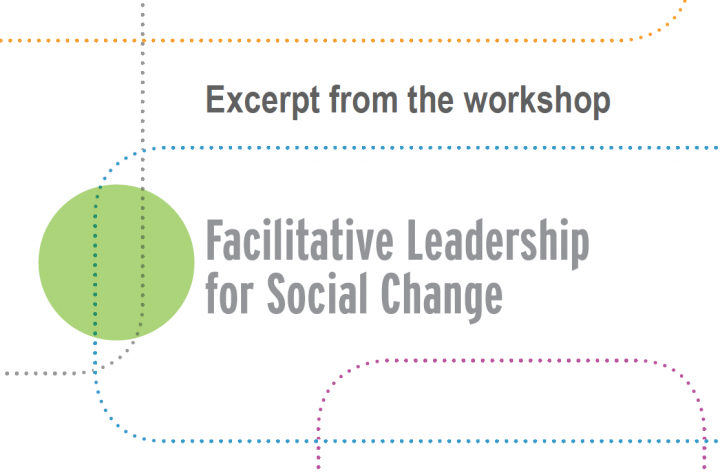
Try introducing the practices of deep listening to unlock a conversation where everyone can both speak their truth and hear other folks’ truths without convincing, berating, or arguing.
Try introducing the practices of deep listening to unlock a conversation where everyone can both speak their truth and hear other folks’ truths without convincing, berating, or arguing. It’s harder than you might think, especially when you think you are right. But remember, these loved ones probably think they are right, too. And, in entrenched conflicts, everyone generally tends to view themselves as the victim and others as holding all the power. Deep listening can be a powerful way to break through all of that.
In these times, deep listening seems more necessary than ever. So, take the risk to really listen to those around you without trying to convert them to your way of thinking. And ask them to take the risk to really listen to you too, without trying to convert you to their way of thinking. Some of what you hear may make your blood boil. Some may make you shake your head in wonder or despair. Some will make you want to ask more questions. This is good – seeking to understand does not imply you agree. Only that you are willing to explore. In the end, if you can use the guidelines shared below, you’ll create a safe space for conversation where you’ll end up still loving one another and you’ll be better informed and better able to engage in the tumult that is our political space this holiday season and beyond. Let us know what you learn!
Tips for Deep Listening
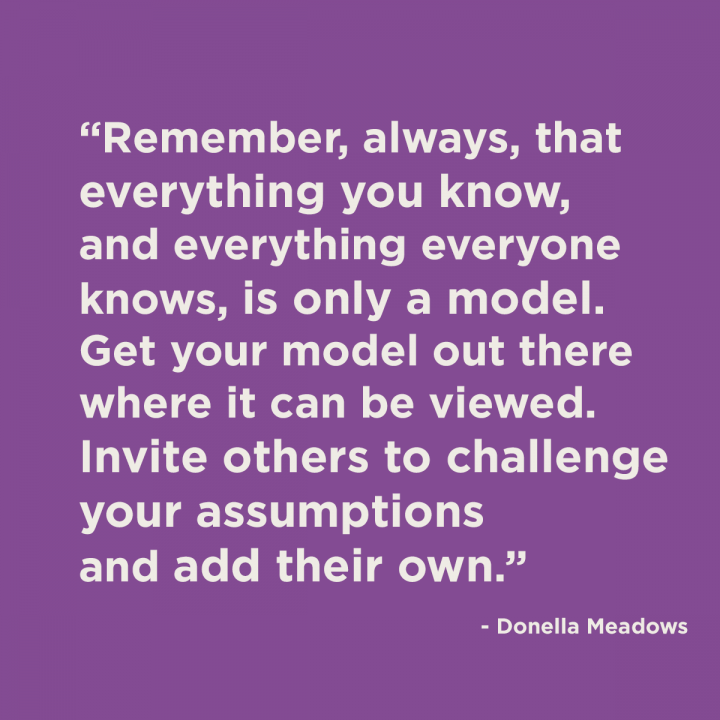
November 8, 2016
The Interaction Institute for Social Change invites you to join a National Call to Action for Unity and Dialogue after the U.S. elections. From the moment the election is settled, we call for a peaceful response from Americans, and from people all over the globe, to the results.
We call for a national conversation in living rooms, workplaces, boardrooms, schools, and government offices to foster healing from the divisions that have been deepened by this election, and to explore the common ties that bind us.
We call on Americans to explore with honesty and empathy the role that race, gender, and immigrant status played in this election to create a powerful wedge in our communities. We ask for commitments and plans to remove this wedge, which for too long has deeply threatened, burdened, and dismantled our democracy. It has fostered violence and death and a loss of opportunity and personal dignity. It has constructed glass ceilings and prevented our children from realizing their full human potential.
We call on Americans to talk to each other and not at each other. The use of social media in this election has perpetuated the false notion that we cannot talk to one another or understand one another across differences or party affiliation. This is not true. In the right places with the right facilitation, we can have meaningful and healing dialogue. Unity is not agreement; it is a decision to stand firmly as Americans to embrace ideas and opinions different from our own, and to disagree peaceably in order to foster understanding and better solutions.
We call all Americans into “Big Democracy” – the belief that the public is fully capable of working together to create sustainable, just, and equitable communities. We can provide peaceful ways for the public to come together and – as professor and social activist Carl S. Moore says – “struggle with traditions that bind them and the interests that separate them so they can build a future that is an improvement on the past.” We can create these conditions with shared leadership and shared responsibility, and with the power of love that resides deeply within each one of us.
With this National Call to Action, we call on all Americans to shift the conversation about what is possible. We call on all Americans to communicate, demonstrate, and create places of experimentation to show that it is possible for the public to come together to solve problems and create change.
Read More
August 1, 2016
Watching intermittent coverage of the Democratic National Convention my heart softened when I heard New Jersey Senator Corey Booker remind those listening that “Patriotism is the love of country, but you can’t love your country if you don’t love your countrymen.” He went on to define love as ‘being there for each other…empowering each other…finding common ground…and building bridges across differences…’ in pursuit of a common goal. He articulated a beautiful and hopeful vision of a nation of love as a free people, living interdependently. Later on during the convention, Broadway stars gathered on stage to sing the American classic, “What the World Needs Now is Love.”
It gave me a feeling of hope, not necessarily in the Party per se, but in the power of love to captivate the collective imaginations of millions of people who believe that another world is possible, and we can make it a better one for all of us.
Read More


